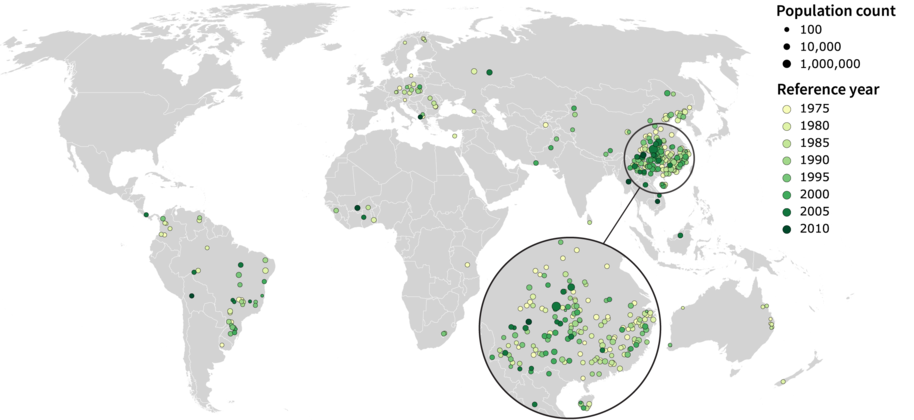The world’s population is currently around 8.2 billion. Wait, is it actually? A new study suggests that governments, international bodies, and researchers may have dramatically underestimated the number of humans currently living on Earth.
ADVERTISEMENT
The reason, they say, is that most datasets severely underestimate the number of people living in rural environments that are tricky to track and report.
Researchers at Aalto University in Finland analyzed the five most widely used global population datasets – called WorldPop, GWP, GRUMP, LandScan, and GHS-POP – and concluded they were potentially missing between 53 percent to 84 percent of the rural population.
Even the most reliable datasets from 2010 were found to underestimate rural populations by around one-third (32 percent) to three-quarters (77 percent). The team goes on to claim there’s strong reason to believe these same errors crept into later global population datasets from 2015 and 2020.
Since 43 percent of humans are currently estimated to live in rural areas, it’s likely that the current world population estimate of 8.2 billion is an underestimate. But by how much? That’s the big question researchers aren’t ready to answer just yet.
“For the first time, our study provides evidence that a significant proportion of the rural population may be missing from global population datasets,” Josias Láng-Ritter, first study author and postdoctoral researcher at Aalto University, said in a statement.
“We were surprised to find that the actual population living in rural areas is much higher than the global population data indicates — depending on the dataset, rural populations have been underestimated by between 53% to 84% over the period studied. The results are remarkable, as these datasets have been used in thousands of studies and extensively to support decision-making, yet their accuracy has not been systematically evaluated,’ he added.

Location of the 307 rural areas analysed in the study.
Image credit: Josias Láng-Ritter et. al / Aalto University
The insights were gleaned by comparing the global datasets to resettlement numbers from over 300 rural dam projects in 35 countries. Although only producing a small snapshot, the resettlement data from dam projects are independently gathered and fairly comprehensive.
“When dams are built, large areas are flooded and people need to be relocated. The relocated population is usually counted precisely because dam companies pay compensation to those affected. Unlike global population datasets, such local impact statements provide comprehensive, on-the-ground population counts that are not skewed by administrative boundaries. We then combined these with spatial information from satellite imagery,” explained Láng-Ritter.
Not everyone is convinced by the study, though. Speaking to New Scientist, Stuart Gietel-Basten at the Hong Kong University of Science and Technology suggested the findings may not be globally applicable, as there was a strong focus on China and other places in Asia. He noted: “I think it’s a very big jump to state that there is a great undercount in places like Finland, Australia, Sweden, etc., and other places with very sophisticated registration systems, based on one or two data points.”
Nevertheless, the study does highlight problems with how population data is collected from rural areas, especially in developing countries, as well as crisis-hit regions and areas that haven’t been industrialized. For instance, the GRUMP and WorldPop datasets use satellites to track the population by looking for night-time lights, but this technique has the potential to ignore areas that lack electricity.
ADVERTISEMENT
If we want to better understand our planet, addressing these data gaps is crucial. More accurate population mapping can lead to better resource allocation, improved infrastructure planning, and a deeper understanding of human life.
“In many countries, there may not be sufficient data available on a national level, so they rely on global population maps to support their decision-making: Do we need an asphalted road or a hospital? How much medicine is required in a particular area? How many people could be affected by natural disasters such as earthquakes or floods?,” commented Láng-Ritter.
“To provide rural communities with equal access to services and other resources, we need to have a critical discussion about the past and future applications of these population maps,” he concluded.
The study is published in Nature Communications.
Source Link: There May Be Way More Than The Official 8.2 Billion People On This Planet, New Study Suggests